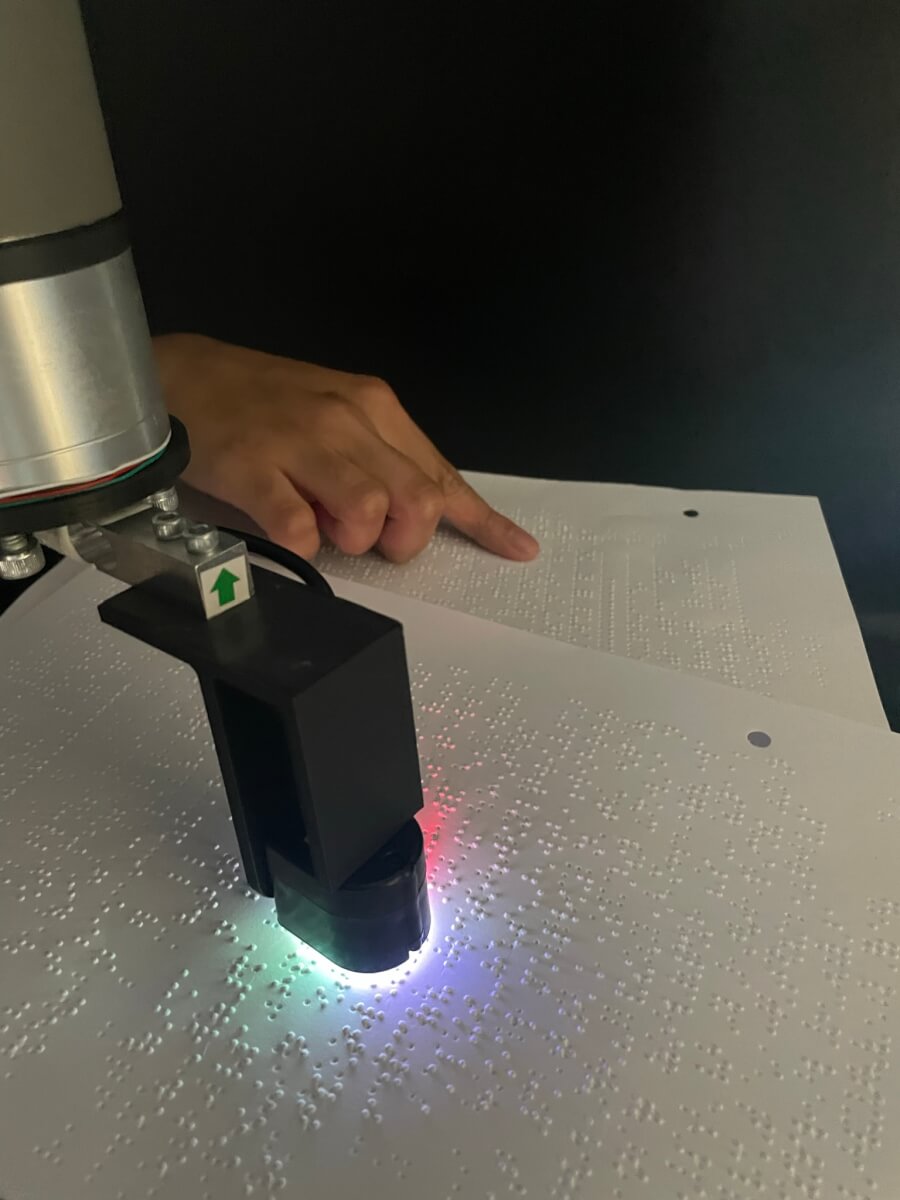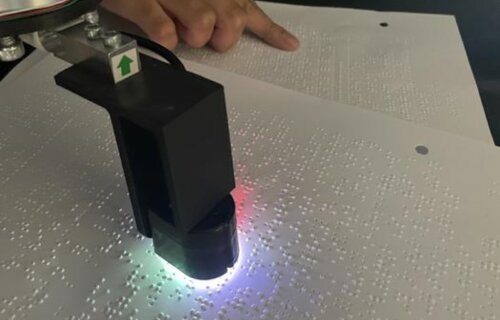CAMBRIDGE, United Kingdom — Artificial intelligence can read braille at incredible speeds. Researchers at the University of Cambridge have created a robotic sensor capable of reading braille at twice the speed of humans. This achievement is opening new avenues in the field of tactile sensing and robotic dexterity.
Researchers utilized sophisticated machine learning algorithms to train the robotic sensor, enabling it to glide over braille text effortlessly. The robot achieved reading speeds of about 315 words per minute with close to 90 percent accuracy. This rate is nearly double the average speed of human braille readers, marking a significant milestone in robotic capabilities.
The primary goal of this robot wasn’t to aid in reading for the visually impaired but to pioneer advancements in robotic sensitivity. The high sensitivity required for braille reading makes it an exemplary test case for developing robotic hands or prosthetics that can mimic the remarkable sensitivity of human fingertips.

Human fingertips possess an extraordinary level of sensitivity, allowing us to perceive minute texture changes or exert the right amount of pressure for different tasks, like holding an egg without breaking it or a bowling ball without dropping it. Replicating this sensitivity in a robotic hand, especially in an energy-efficient manner, poses a significant engineering challenge.
Professor Fumiya Iida’s lab at Cambridge’s Department of Engineering is at the forefront of addressing these challenges.
“The softness of human fingertips is one of the reasons we’re able to grip things with the right amount of pressure,” says study first author Parth Potdar, from Cambridge’s Department of Engineering and an undergraduate at Pembroke College, in a university release. “For robotics, softness is a useful characteristic, but you also need lots of sensor information, and it’s tricky to have both at once, especially when dealing with flexible or deformable surfaces.”
Researchers chose braille as the testing ground due to its requirement for high tactile sensitivity. Traditional robotic braille readers operate by touching and reading one letter at a time, a process significantly slower than the human approach to reading. The Cambridge team’s innovation lies in developing a more efficient, realistic reading method.
Their robotic sensor incorporates a camera in its “fingertip,” combining visual and sensory information to read. This approach presented a unique challenge, as motion blur during rapid reading required complex image processing. The team overcame this by training their machine learning algorithm with blurred images of braille, which the system learned to deblur before character recognition.
Upon incorporating these algorithms, the robot’s reading speed and accuracy reached impressive levels, comparable to human readers.
“There are existing robotic braille readers, but they only read one letter at a time, which is not how humans read,” notes study co-author David Hardman, also from Cambridge’s Department of Engineering. “Existing robotic braille readers work in a static way: they touch one letter pattern, read it, pull up from the surface, move over, lower onto the next letter pattern, and so on. We want something that’s more realistic and far more efficient.”
Beyond braille reading, this research has broader implications for robotic applications requiring tactile sensing, like texture detection or slip prevention in object manipulation. Looking ahead, the team aims to scale this technology to the size of a humanoid hand or skin, further bridging the gap between human and robotic tactile abilities.
This project has been supported in part by the Samsung Global Research Outreach Program, signifying its potential impact on future technological developments. The study is published in the journal IEEE Robotics and Automation Letters.
Watch the braille reader in action:


Careful ,it my be able to start writing it’s own text and language…just a theory..